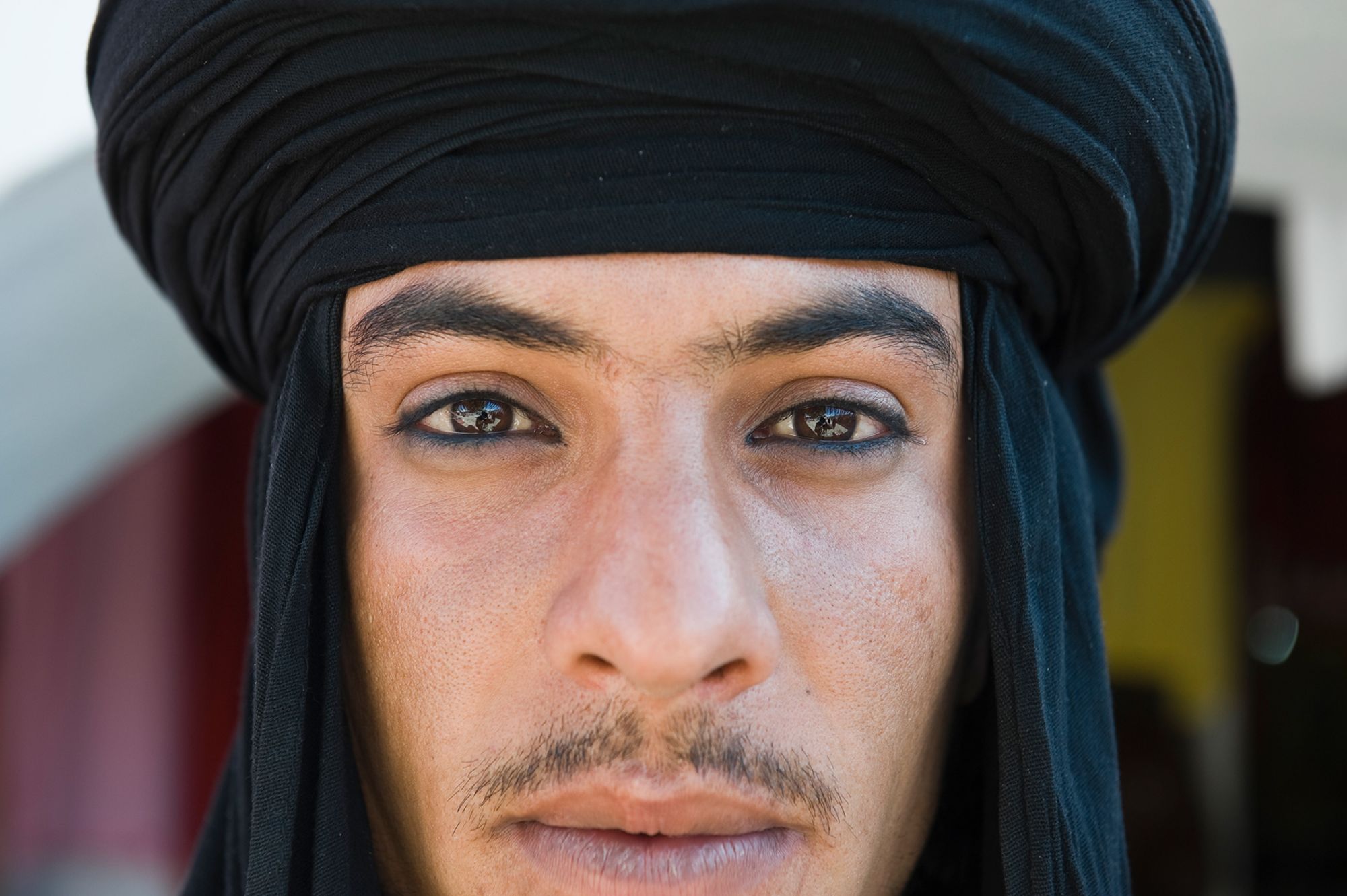Kohl use in the Middle East and North Africa is as rich and varied as the region itself. The earliest iteration of eyeliner — which has been integral to Arab culture for millennia — can be traced back to ancient Egypt where it served not only beautification purposes but was also thought to offer protection against the harsh desert sun and even the evil eye (which can signify a curse or an ill-intentioned glance).
Over the centuries, the use of kohl spread across the Arabian Peninsula, eventually becoming a staple in the daily lives of both men and women with its wide-ranging applications — aesthetic, medicinal, religious, and practical. It is believed that Crusaders may have brought the practice of using kohl back to Europe.
The methods of preparing and applying kohl have also reflected the region’s diverse cultural landscapes. The pigment is typically made from natural materials; Emiratis have historically preferred date seeds, for example, while in Lebanon, cedar honey and even the gallbladder of a hyena have been used.
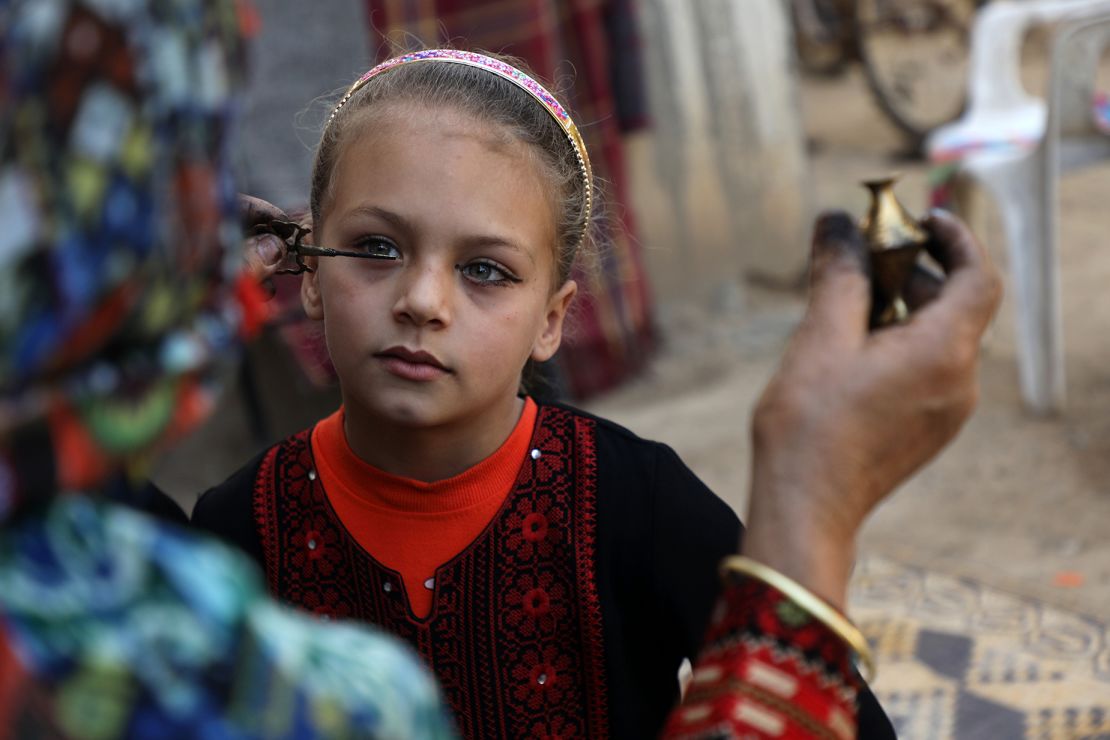
In rural communities, residents often produce their kohl at home, or in group settings. The process involves sourcing readily available ingredients, such as plants, tree sap, or stone, which are then burned to soot, melted, or ground into powders with a mortar and pestle. Much like their Ancient Egyptian counterparts, Emirati women even had their kohl buried with them, along with their jewelry and pottery.
Preserving an ancient custom
During Israel’s bombardment of Gaza, I’ve often thought of Tamam Farhan Abu Issa, a resident of Gaza’s city of Deir al Balah. I stumbled upon her story while researching my book, “Eyeliner: A Cultural History,” which traces the evolution of the cosmetic, from its ancient roots to its modern variations. Using methods passed down for generations, in 2022, Abu Issa spoke enthusiastically of how she sought to preserve the historical art of making kohl. “Okay, girls, this kohl, I made it myself,” she proudly says in a video produced by UNESCO, a United Nations agency, which worked with Palestinian artisans to help document and safeguard traditional handicrafts. “It is an old product that is part of the heritage of the Palestinian people.”
Abu Issa demonstrates how to make the pigment: she begins by soaking a piece of cotton cloth in olive oil, using old robes decorated with tatreez (Palestinian embroidery) to absorb the excess oil. She then places the cloth under an aluminum pan and allows it to burn above a flame overnight. The process produces soot, which accumulates on the underside of the pan; the superfine powder is then collected and stored as kohl in ornate brass pots. Abu Issa dips an applicator moistened with olive oil into the pot to gather the pigment, then smoothly drags it along her lash lines, darkening her eyes.
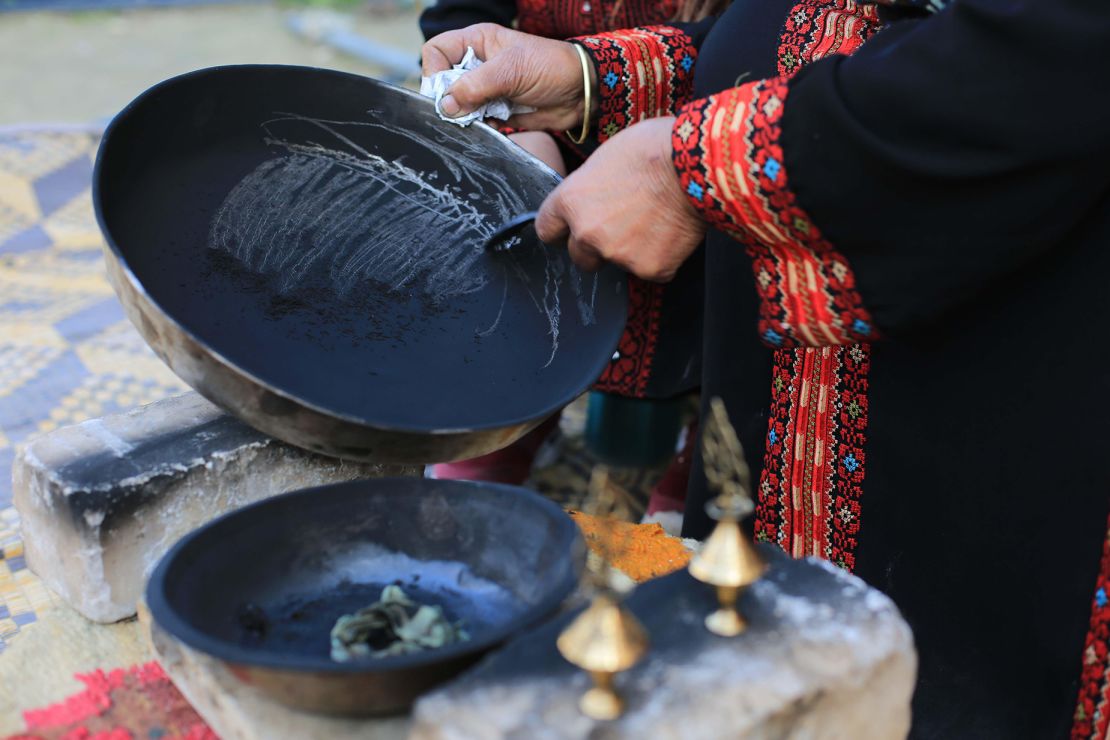
Against the backdrop of the Israel-Hamas war, the preservation of customs like kohl-making assumes greater significance in the Palestinian context. As demonstrated by Abu Issa, the process reflects not only one method of creating an age-old cosmetic, but also a deep connection to Palestinian cultural traditions, and by extension, the region’s broader history. Further, the practice embodies a form of cultural continuation — perhaps even cultural resistance.
A rite of passage into manhood
From the deserts of Saudi Arabia and Jordan to Palestinian villages, kohl is used during special occasions such as weddings, childbirth, and religious celebrations. (Abu Issa speaks of how her grandmother advised her to apply kohl around her children’s eyes upon their birth to help them sleep at night, for example). Some Muslims consider the wearing of kohl to be Sunnah — meaning the way of the Prophet Muhammad — given he was said to have worn a form of it to treat his eyes medicinally.
The tradition also finds its origins in various communal practices, including those of the Bedouin, the nomadic peoples of the Arabian deserts. There, kohl is traditionally applied not only along the waterlines, for its aesthetic appeal, but also around the entire eye area — beneath the lower lash line and sometimes above the upper lash line. The application has a dual purpose: to enhance the beauty of the eye, and to provide protection against the sun’s glare, wind, and sand. This reverence for kohl is mirrored in Saudi Arabia, where some men (such as the “Flower Men” of the Qahtan tribe) wear it to honor their tribal heritage.
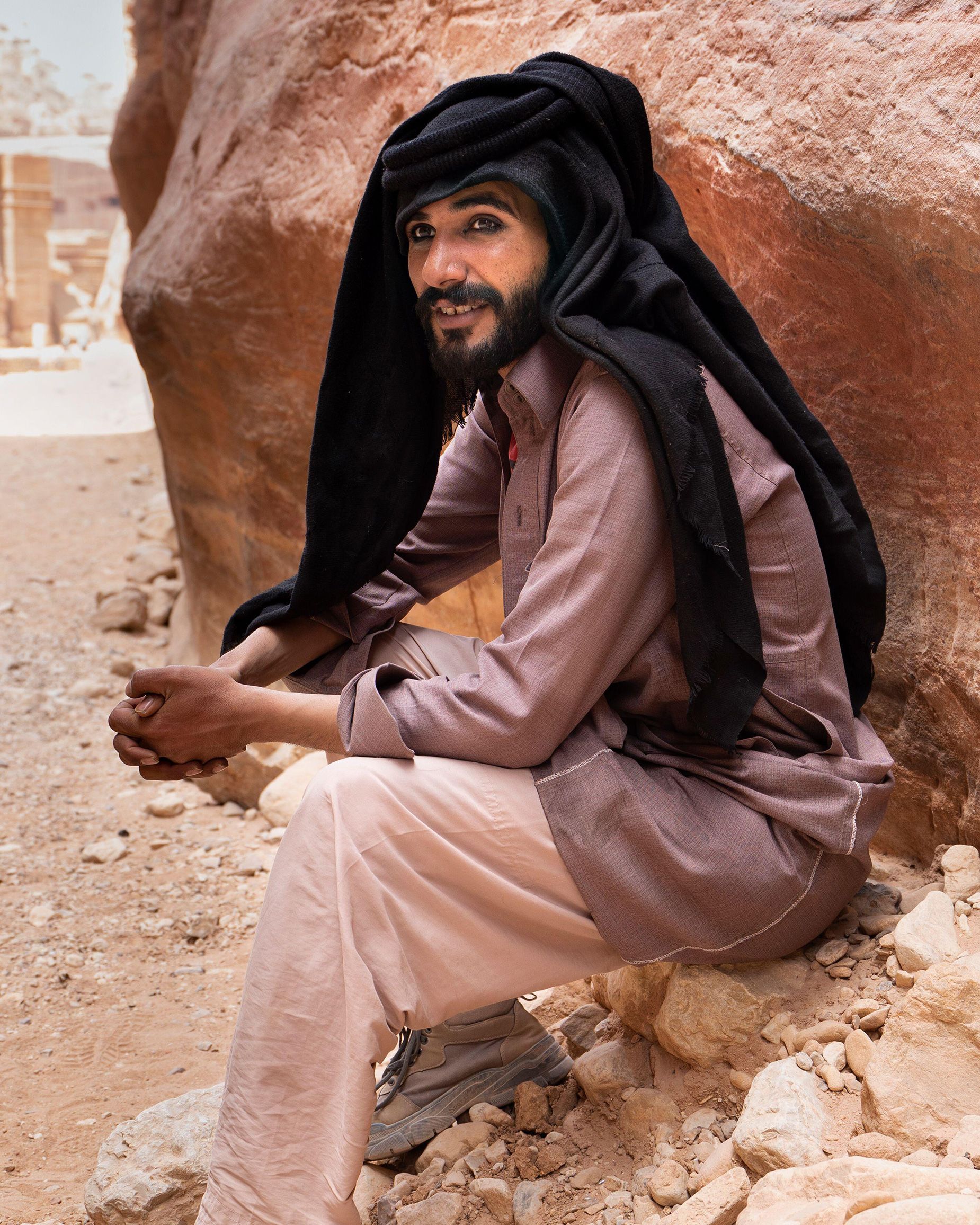
In Bedouin society, the application of kohl is also considered a rite of passage into manhood and a marker of singledom. Among the younger Bedouins, there’s a playful acknowledgment of kohl’s impact on one’s appearance: of his heightened good looks after applying kohl, Raed, a 19-year-old Bedouin, jokingly told me in an interview conducted in Petra for my book research, “Do I look like Jack Sparrow, or does Jack Sparrow look like me?’” (In 2010, the cosmetic’s allure spurred the UAE General Authority of Islamic Affairs and Endowments to issue a fatwa, or formal ruling, allowing its use, so long as it wasn’t to attract the opposite sex.)
Entrenched in cultures
Kohl has withstood the test of time, enduring eras of profound upheaval, including wars, colonialism, occupation, the rise and fall of empires, natural disasters, and significant cultural shifts. It has survived prolonged periods of economic tumult, globalization, and changing beauty standards.
As such, well before eyeliner was adopted as a now-ubiquitous cosmetic in the West, it was already deeply entrenched in Middle Eastern and North African cultures. In the region’s folklore, literature, song, and dance, kohl has been celebrated for centuries. The image of kohl-lined eyes is a recurring motif in various Arab art forms: in poetry, for example, Middle Eastern and Arab women are portrayed as being staggeringly beautiful in part due to their “oyoun al sood” (black eyes) or “oyoun kaheela” (kohl-rimmed eyes.) Kohl is so commonly worn in the area that girls are sometimes named or nicknamed Kahla by their parents or friends, roughly meaning “the girl who appears to have kohl around her eyes.” Kohl is also a feature of many millennia-old myths, rituals, and legends. Zarqa al‑Yamama (Blue Dove), a heroine of pre-Islamic folklore, was famed for the strength of her eyesight, which was credited to her use of kohl.
Bridging tradition and modernity
Today, kohl maintains its status across the Arab world and in Muslim communities, though its use has evolved. On social media platforms, kohl has gained popularity among young women, bridging tradition and modernity. Instagram and TikTok feeds feature posts from Arab and Muslim influencers and makeup enthusiasts showcasing their kohl-lined eyes. “There we are!” says TikTok influencer “Blinkaria Kohl Girl” (who has more than 33m likes) after applying the product in a tutorial. “You get waterline and tightline.” (Waterlining involves drawing eyeliner onto the inner rim of the eyelids for a dramatic look, while tightlining is the application of pigment at the base of the lashes for a subtle, fuller-lash effect; both are centuries-old).
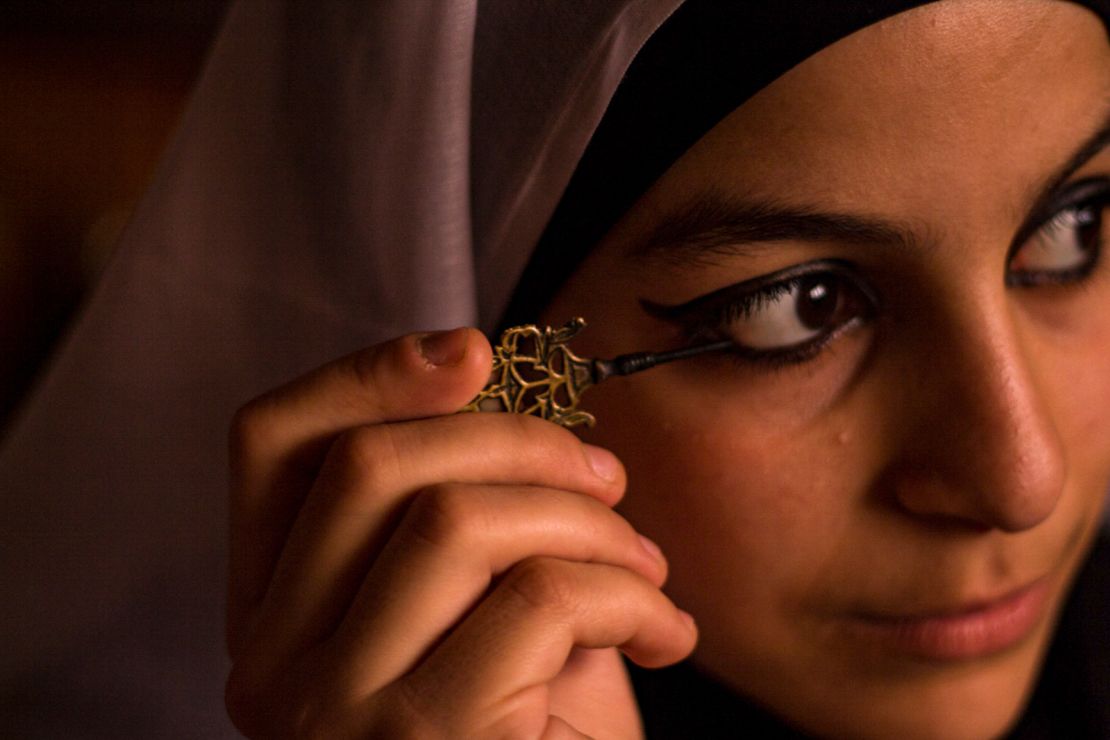
Younger generations have incorporated modern beauty trends like liquid eyeliner into their routines as urban areas have experienced a shift towards imported Western or South Asian eyeliner brands for practical purposes. “Kohl is simple to make,” observed Abu Issa of Gaza, “but many women find it easier to use ready-made products. This could be because they are impatient or want to avoid getting their hands dirty.” Handmade kohl (often purchased from local souks or sellers) is still sought after despite these shifts, particularly among those who value cultural continuity. Maram, an Egyptian woman in her mid-30s, told me in an interview for my book, “I grew up believing kohl was a traditional Egyptian practice. When I started using kohl as a teenager, I thought it looked cool. And I’ve continued to wear it every day since.”
For Abu Issa and indeed many across the Arab world, myself included, making kohl is not only a craft; it is a tangible link to her grandmother’s legacy, and to her identity. “Even if she doesn’t (make kohl) anymore, I will for sure continue to do this myself,” Abu Issa said. “I’m happy to produce something for my personal use. I’ve done something good for myself.”
“Eyeliner: A Cultural History” by Zahra Hankir is published by Harvill Secker in the UK and Penguin Books in the US and out now.
